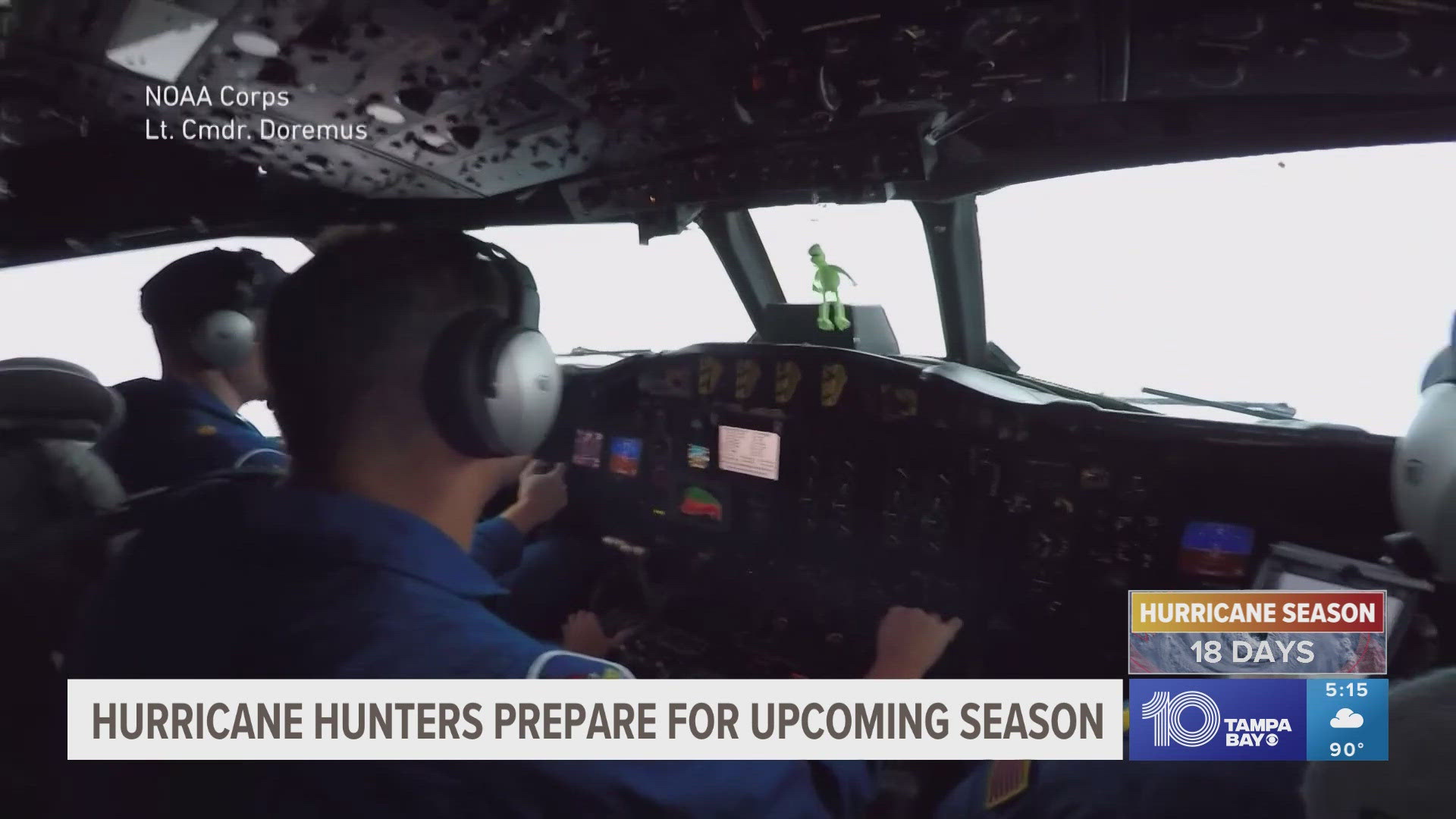![hurricaneoutlook [ID=15433295]](http://moc-assets-prod.gannett-cdn.com/-mm-/3d5569507733ca056af5edaf0a2a8036c559fb13/r=500x375/local/-/media/WTSP/WTSP/2014/09/11/1410427354000-hurricaneoutlook.jpg)
(News-Press.com) - It's been a quiet hurricane so far, but don't tell that to Dennis Feltgen at the National Hurricane Center in Miami.
"It doesn't matter," Feltgen said when asked if El Nino conditions were keeping a lid on the 2014 hurricane season. "It doesn't matter what the seasonal outlook is. What matters is being prepared. We've got three months of hurricane season to go, and we're in the peak."
Sept. 9, 10 and 11 are the days, historically, with the most activity in the Atlantic basin, according to the National Oceanic and Atmospheric Administration. This week is also the midway point of the hurricane season, which runs from June 1 through Nov. 30. Meteorologists are monitoring two systems now, a disturbance off the east coast of Florida and another low pressure system that spun off the west coast of Africa earlier this week.
The Atlantic has produced four named systems, and three of those have become hurricanes. An average year is 12 named storms, with six of those becoming hurricanes — three of those being category 3 or higher. Although void of big-name storms, the 2014 seasons has been active. In recent weeks, the NHC monitored as many as five tropical systems in a day.
Lee Mayfield, planning chief at Lee County Emergency Operations, said Southwest Florida residents and property owners should keep an eye on the tropics through the end of season. Late September and October are when the Gulf of Mexico is the most active.
"We have a lot of time to go in the season, and one of the biggest challenges we have this time of year is complacency," Mayfield said. "A lot of people say 'hurricane season is pretty much over.' That's definitely a problem with making sure the public is prepared."
Mayfield said Hurricane Andrew in 1992 is a good example of a quiet season undone by a single system.
"It was a very slow year in general, with the exception of one storm, and that was Andrew," Mayfield said. "It only takes one bad storm to make it a bad day for Southwest Florida."
Hurricane Arthur hit North Carolina in July with 100 mph winds and several inches of rain. Arthur is the only storm that has made a significant impact on the U.S., but Felten points to Hurricane Wilma, which struck Southwest Florida on Oct. 24, 2005, as an example of a late-season storm that can have major impact.
Climate maps from the NOAA show September and October as months with likely hurricane tracks that impact Florida. October is considered by some to be the most dangerous month of the season here, as hurricane origin points shift from the Atlantic Ocean and west Africa to the Caribbean Sea and Gulf of Mexico.
"The prime development area shifts, but in September it's pretty much everywhere," Feltgen said. "In October everything shifts westward to the Caribbean Sea and Gulf of Mexico. Those waters are still warm. That time of year the storms go that way more and more because we're starting to go into the fall months, and the cold fronts are starting to move through, and the winds are coming out of the southwest and that tends to pull the systems northward."
Hurricane Wilma, Feltgen said, followed that script exactly, forming in the Gulf of Mexico before slamming into Naples, Fort Myers and the Lake Okeechobee area before reemerging in the Atlantic.
Storms can form as late as Thanksgiving — 15 named formed during third week of November from 1851 through 2009, according to NOAA records.
Dan Summers, direct of Collier County's Bureau of Emergency Services, said he notices a falloff in public interest this time of year.
"I sort of gauge it by the number of speaking engagements we get," Summers said. "We get a lot of engagements at the beginning of the season, and it has fallen off now that we're at the midpoint. That's a concern, but it hasn't slowed our preparedness activities down whatsoever."
Systems form anywhere from western Africa to the Gulf of Mexico to well north of the Bahamas. Tropical storms have even formed over Venezuela in South America, where direct impacts from named systems are rare.
Tropical systems have been active in the Pacific Ocean this year, with the 15th named storm emerging Wednesday. The Pacific records more named storms, hurricanes and major hurricanes than the Atlantic does in an average year. This year is not average, Feltgen said.
"If we have a relatively average or below average Atlantic season, it's not unusual for the eastern Pacific to be above average," he said.
Right now
• Disturbance 1 is about 600 miles west of the Cape Verde islands and remains disorganized, according to NOAA, which also reports that conditions could become somewhat more favorable for development later in the week as it moves west-northwest and northwest at about 15 mph.
• Disturbance 2 is disorganized over the Bahamas. Development should be slow as it moves westward at 5 to 10 mph in the next few days, according to NOAA.
Costly hurricanes that made landfall after Sept. 1
• Ike (2008): Category 2, $27.9 billion
• Wilma (2005): Category 3, $20.6 billion
• Ivan (2004): Category 3, $19.8 billion
• Rita (2005): Category 3, $11.8 billion
• Hugo (1989): Category 4, $9.7 billion
• Jeanne (2004): Category 3; $7.7 billion
Source: Weather Underground


